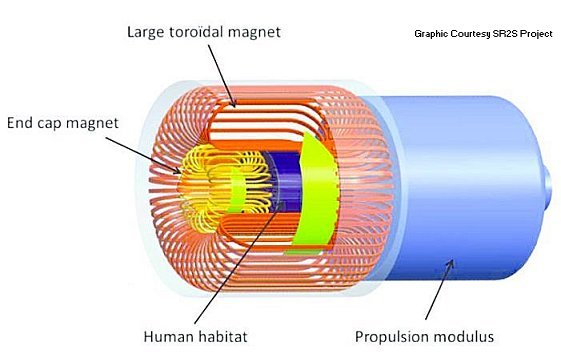

Long duration spaceflights - like a mission to Mars - present significant dangers to astronauts due to continuous radiation exposure. Long term exposure to cosmic rays as well as charged solar particles from the Sun could lead to an increased cancer risk. In 2015 the EU "SR2S" project concluded that one possible solution would be to surround the crew quarters with a strong electromagnetic field, as shown above. This would deflect incoming charged particles in the same way that earth's magnetic field protects life on our planet. However, even a strong magnetic field would not shield astronauts from gamma and x-rays. For this, high density materials like lead (Pb) or tungsten (W) are required. Superconductors.ORG proposes that either of two high-temperature superconductors discovered more than 15 years ago could mitigate both forms of radiation - because they contain lead (Pb). And the critical transition temperature (Tc) of each is more than 60 degrees higher than the magnesium-diboride (MgB2) superconductor proposed in SR2S, easing cooling requirements.
In planning for a long-duration spaceflight engineers can't just stack layers of heavy metal around the living quarters to shield the crew. Weight is a preeminent consideration in designing any space vehicle. Additionally, any increase in shielding creates a risk of secondary radiation, where very energetic particles smash into shield atoms that break apart and create a shower of secondary particles. This is especially the case with galactic cosmic rays.
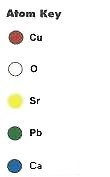
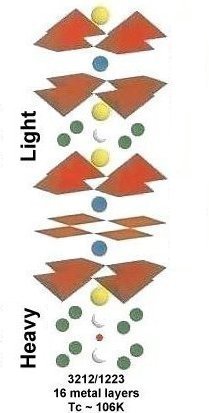
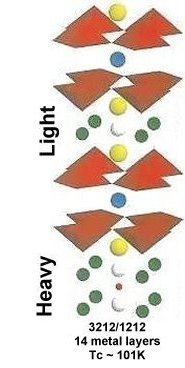
These proposed superconductors are both copper-oxides that take advantage of planar weight disparity to achieve transition temperatures (Tc) over 100 Kelvin. Their structures are shown above. The compound Pb3Sr4Ca3Cu6O17+ has a Tc of 106K and Pb3Sr4Ca2Cu5O15+ transitions near 101K. Looking at the unit cells, the 101K material actually has more lead (Pb) per unit volume than the 106K material. So it has slightly more attenuating capability - its lower Tc not withstanding.
Another feature of these two materials is they contain strontium and calcium, both of which absorb x-rays. Thus, as the superconducting magnet is deflecting charged particles around the crew quarters, the lead, strontium, and calcium are attenuating x-rays and gamma rays that come through the magnetic field.
Below is a 4-point resistance plot of Pb3Sr4Ca3Cu6O17+ showing its sharp transition to a superconductive state at temperatures easily achieved with a sunshade and heat pump, similar to what is used on the James Webb Space Telescope.
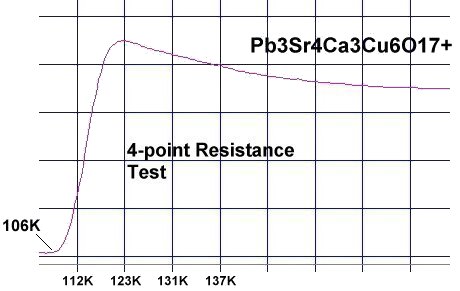
So, while there was no clear application in mind for these two lead-based superconductors in 2005 and 2007 when they were created, they could fill a critical need in the near future as man ventures into interplanetary space.
Synthesis of these materials was by the solid state reaction method. Stoichiometric amounts of the below precursors were mixed, pelletized and sintered for 36 hours at 860C. The pellet was then annealed for 10 hours at 500C in flowing O2.
PbO 99.99% (Alfa Aesar)- E. Joe Eck
© 2023 - 2025 Superconductors.ORG
All rights reserved.
 BACK to "News" page at Superconductors.ORG
BACK to "News" page at Superconductors.ORG